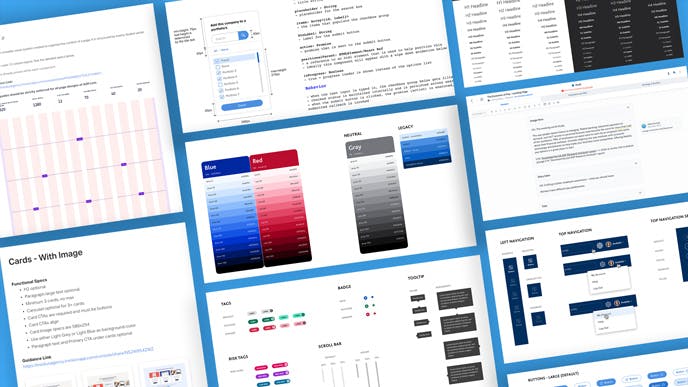Why every company should invest in a digital design system

A smarter way to move faster, stay consistent, and scale digital experiences
Let’s face it—business resources are tight, and expectations are sky-high. Whether it’s time, talent, or budget, today’s creative teams are under constant pressure to do more with less. That’s why smart companies are leaning into design systems to speed up their work, keep assets consistent, and deliver better experiences across every touchpoint.
At Modus, we’ve seen it firsthand: when clients invest in a design system, they unlock real efficiencies and brand consistency—whether it’s for a new product, a refreshed website, or a multichannel campaign. In a world where everything moves fast and change is constant, having a solid design foundation gives businesses a serious edge.
So, what is a design system?
A design system is a toolkit of reusable components—things like buttons, typography, color palettes, and layouts—that help teams build digital products faster and with consistency. But design systems are more than just style guides. They’re a shared language that aligns design, development, and marketing teams so they’re not reinventing the wheel every time they kick off a new project.
A design system evolves with your brand, helps everyone work from the same playbook, and makes collaboration across big teams and projects a whole lot smoother.

Why it’s worth the investment
Think about this: if you could make just one part of your business 10% more efficient, wouldn’t you do it? With a design system, teams often see that kind of boost, especially when working at scale. The bigger your org and the more digital products you have, the more value you'll get.
Instead of designing everything from scratch, teams pull from a ready-made library of brand-approved components. That means faster launches, fewer errors, and more consistent user experiences. And when paired with AI tools, the speed gets even better—generative AI can now help teams generate branded components faster, suggest layout improvements, or even flag inconsistencies before they go live.
Keep up with agile workflows
In today’s agile world, priorities shift fast. Teams are shipping features weekly (or daily), not quarterly. There's no time to zoom out and rebuild every screen or interaction from the ground up.
A strong design system supports this rapid pace. It gives teams the freedom to focus on solving real user problems instead of spending hours debating button styles or rebuilding the same nav bar over and over again. And with AI now playing a growing role, you can even automate parts of the design process—like generating new templates, tagging components, or adapting designs for accessibility—without adding extra work to your team’s plate.
It’s not as hard as it sounds
Yes, building a design system takes effort—but it’s more doable than you might think. You’re not starting from zero. In fact, many of the basic building blocks already exist. Think of standard UI elements like buttons or forms—those are already familiar. What makes your system powerful is how you adapt and apply them with your own brand personality.
You can start small, build iteratively, and scale over time. Platforms like Material Design or component libraries in Figma or Storybook make it easier to get up and running. And once your system is in place, AI tools can help maintain it, generate new variants, and even flag outdated or unused components so your library stays clean and current.
Better collaboration, less chaos
Remote work, team turnover, and freelance support have made consistent collaboration more challenging than ever. A design system creates clarity, especially when new team members join or projects shift quickly. It removes the guesswork, reduces repetitive tasks, and helps everyone focus on what really matters: delivering great experiences.
At the end of the day, a design system isn’t just a nice-to-have—it’s a strategic asset. It helps brands stay flexible, creative, and consistent, all while moving faster and reducing friction. And with AI now part of the mix, building and maintaining one has never been more powerful—or more accessible.



